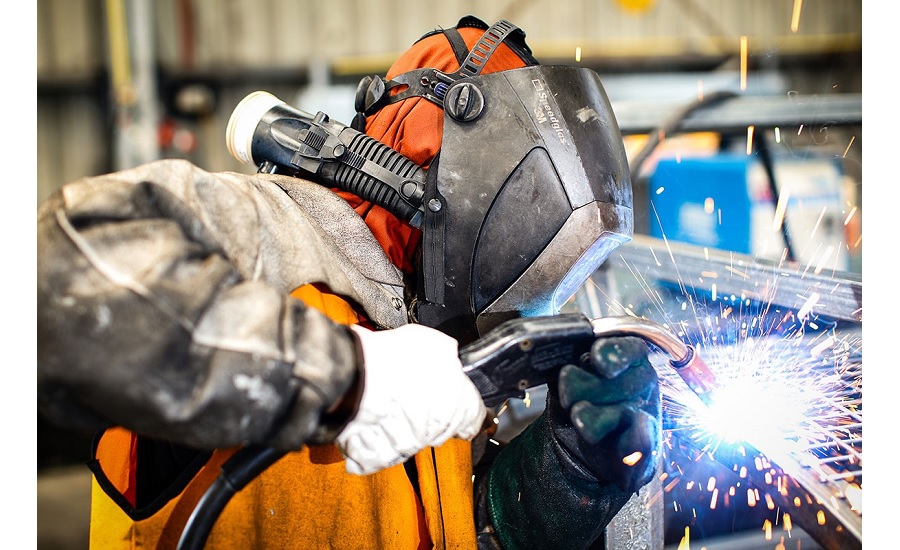Welding WPS for Beginners: Beginning with Welding Treatment Specifications
Welding WPS for Beginners: Beginning with Welding Treatment Specifications
Blog Article
The Ultimate Overview to Welding WPS Procedures: An Extensive Introduction for Welders
In the intricate world of welding, Welding Procedure Specifications (WPS) offer as the foundation of making certain quality, consistency, and safety in welding operations (welding WPS). As we dive right into the numerous parts of a WPS and check out the ins and outs of credentials and certification, we will certainly uncover the important role these procedures play in the realm of welding.
Significance of WPS Procedures
Understanding the importance of Welding Treatment Specifications (WPS) treatments is crucial for making certain the quality and honesty of bonded frameworks. WPS procedures act as a roadmap for welders, detailing the essential steps, criteria, and products needed to achieve a sound weld. By sticking to WPS standards, welders can make sure consistency in their job, resulting in reputable and structurally sound welds.
Among the primary reasons WPS treatments are essential is their duty in preserving weld high quality and integrity. Following the specified welding parameters and strategies laid out in the WPS aids stop problems such as porosity, breaking, or incomplete blend, which can endanger the strength and sturdiness of the weld. Additionally, WPS procedures are vital for guaranteeing compliance with market standards and codes. By complying with well established WPS guidelines, welders can demonstrate that their job fulfills the essential requirements for safety and quality, providing assurance to customers, inspectors, and governing bodies. Essentially, the relevance of WPS treatments can not be overemphasized, as they are basic to achieving constant, top notch welds that fulfill sector criteria and requirements.

Components of a WPS
A Welding Treatment Specification (WPS) usually comprises important parts that information the details needs for implementing a weld, making sure consistency and quality in the welding process. The key parts of a WPS include essential variables such as base steels, filler steels, interpass and preheat temperature levels, welding processes, protecting gases, welding settings, and post-weld heat therapy requirements.
Base metals refer to the materials being signed up with, while filler metals are utilized to fill up the gap between the base metals during welding. The welding process describes the specific technique to be utilized, whether it's gas steel arc welding (GMAW), shielded metal arc welding (SMAW), or an additional method. Welding settings specify the positionings in which welding can be executed.

Certification and Accreditation
Having actually established the crucial elements of a Welding Procedure Specification (WPS), the focus currently shifts in the direction of the important aspects of qualification and qualification in welding techniques.

Certification, on the various other hand, is the formal recognition of a welder's credentials by a relevant accreditation body or organization. Welding certifications are commonly based on the details welding procedures, materials, and placements a welder is qualified to collaborate with. Holding a legitimate welding accreditation shows that a welder fulfills sector criteria and is skilled to perform welding tasks to the needed specs.
Creating a WPS
To establish a Welding Procedure Requirements (WPS) that fulfills industry requirements, careful consideration of welding procedures, materials, and operational criteria is necessary. The very first step in developing a WPS is to identify the welding process to be used, such as gas steel arc welding (GMAW) or protected metal arc welding (SMAW)

Implementing and Keeping Track Of WPS
Upon completing the detailed Welding Treatment Spec (WPS) that diligently details welding processes, products, functional parameters, and quality guarantee steps, the focus changes to efficiently executing and keeping track of the established procedures. Application entails guaranteeing that all welders involved in the job recognize with the WPS and follow it thoroughly during the welding process. This requires providing appropriate training and guidance to ensure adherence to the defined procedures. Checking the WPS involves continuous oversight to validate that welding activities straighten with the documented requirements. Examinations, testing, and top quality control steps are vital elements of the surveillance process to identify any discrepancies or issues immediately. Routine audits and testimonials of the welding procedures aid in maintaining consistency and top quality throughout the task. Reliable execution and monitoring of the WPS are important for making certain the stability, toughness, and safety of the bonded joints, inevitably adding to the overall success of the welding job.
Conclusion
Finally, understanding and following Welding Procedure Specifications (WPS) is essential for welders to make certain high quality, uniformity, and security in their work. By understanding the components of a WPS, obtaining appropriate qualifications and certifications, creating in-depth procedures, and carrying out and checking them effectively, welders can enhance their abilities and effectiveness in welding practices. Following WPS treatments is necessary for creating top notch welds and conference industry requirements.
In the complex globe of welding, Welding Treatment Specifications (WPS) offer as the foundation of guaranteeing top quality, consistency, and safety in welding procedures. The welding process lays out the particular strategy to be utilized, whether it's gas steel arc welding (GMAW), shielded metal arc welding (SMAW), or an additional technique.To create a Welding Procedure Spec (WPS) that meets industry criteria, mindful consideration of welding procedures, materials, and functional parameters is vital. The very first step click here to find out more in creating a WPS is to identify the welding procedure to be utilized, such as gas steel arc welding (GMAW) or secured metal arc welding (SMAW)Upon finalizing the thorough Welding Treatment Spec (WPS) that meticulously details welding processes, materials, functional specifications, and top quality guarantee measures, the emphasis changes to efficiently executing and keeping an eye on the established treatments.
Report this page